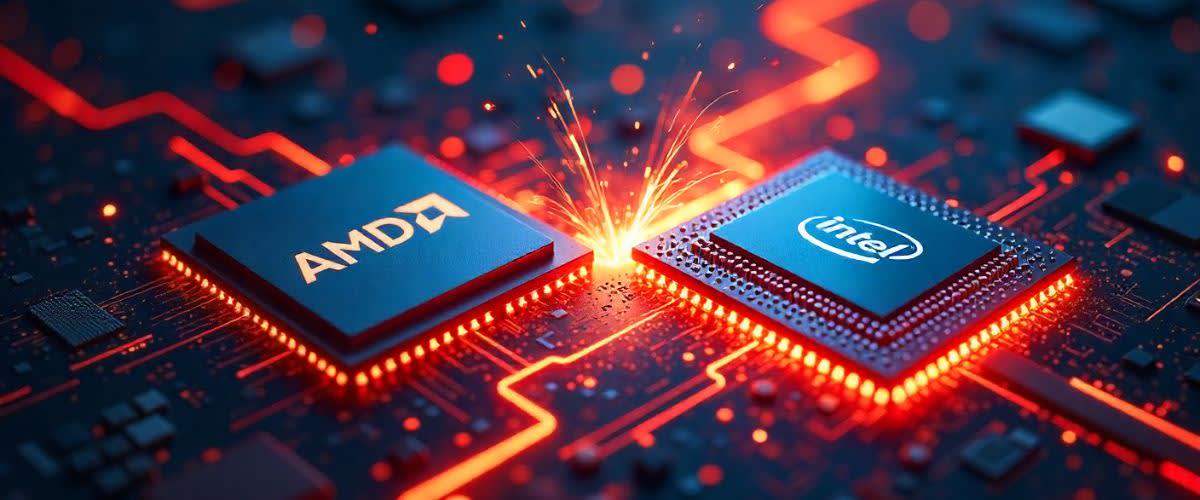The rivalry between AMD (Advanced Micro Devices) and Intel has defined the semiconductor sector for decades, but in 2025, the battle has intensified. With AI-powered computing, data centre expansion, and edge computing reshaping global demand for chips, both companies are racing to claim leadership in an evolving landscape. For traders, this rivalry is more than tech drama, -it’s a volatile opportunity space.

AI is the New Battleground
AMD’s recent focus on AI hardware has positioned it as a challenger to Nvidia while continuing its pursuit of Intel’s datacenter share. The launch of AMD’s Instinct MI325 accelerator in early 2025 triggered a wave of institutional interest, especially as demand for generative AI infrastructure expands.
Intel, however, is countering with its Gaudi3 AI accelerator chips, paired with aggressive pricing strategies and increased production capacity. CEO Pat Gelsinger’s turnaround strategy is banking on regaining tech leadership and investor confidence.
Traders should watch:
- Benchmark performance vs Nvidia
- Adoption of AMD’s and Intel’s AI accelerators
- Margin compression due to price wars
Data Centres and Foundry Dynamics
Intel’s IDM 2.0 strategy, which combines foundry and design, has begun to show results. Its foundry division secured new deals with large tech clients in Q1 2025, signalling traction in a space traditionally dominated by TSMC.
AMD, a fabless firm, remains dependent on TSMC, which raises exposure to supply chain and geopolitical risks. However, AMD’s tight focus on high-performance compute and server markets has allowed it to take share in cloud deployments.
For traders, keep an eye on:
- Intel’s foundry revenue growth
- AMD’s server CPU traction (EPYC series)
- TSMC’s capacity constraints
Capitalise on volatility in share markets
Take a position on moving share prices. Never miss an opportunity.
71% of retail CFD accounts lose money.

Financials and Earnings Volatility
Both AMD and Intel have issued upward revisions to their 2025 guidance, with AI and datacenter demand cited as the key drivers. But execution risk remains high.
Intel’s Q2 earnings surprised to the upside, but capex levels were a concern. AMD’s stock, meanwhile, jumped 6% after announcing strategic partnerships in the AI space, but guidance remains conservative.
Key trading events:
- Quarterly earnings dates (watch for surprises)
- Forward guidance and margin outlook
- Comparison vs broader SOX Index trends
Geopolitics and Supply Chain Considerations
Semiconductors remain highly exposed to geopolitical tensions, especially US-China relations and Taiwan’s strategic position. Intel’s domestic US fabs are a partial hedge, but investors may discount AMD due to its full reliance on Asian fabrication.
Watch for headlines on:
- US export restrictions
- TSMC/ASML supply disruptions
- Government subsidies (CHIPS Act)
Conclusion: Volatility with Direction
For traders, AMD vs Intel is not just a binary call — it’s a way to trade the evolving structure of AI, cloud computing, and geopolitical dynamics. While Intel’s foundry play adds vertical strength, AMD’s design leadership remains key in high-performance compute. With macro conditions volatile and demand shifting rapidly, this chip war is likely to remain central to semiconductor trading in 2025.











